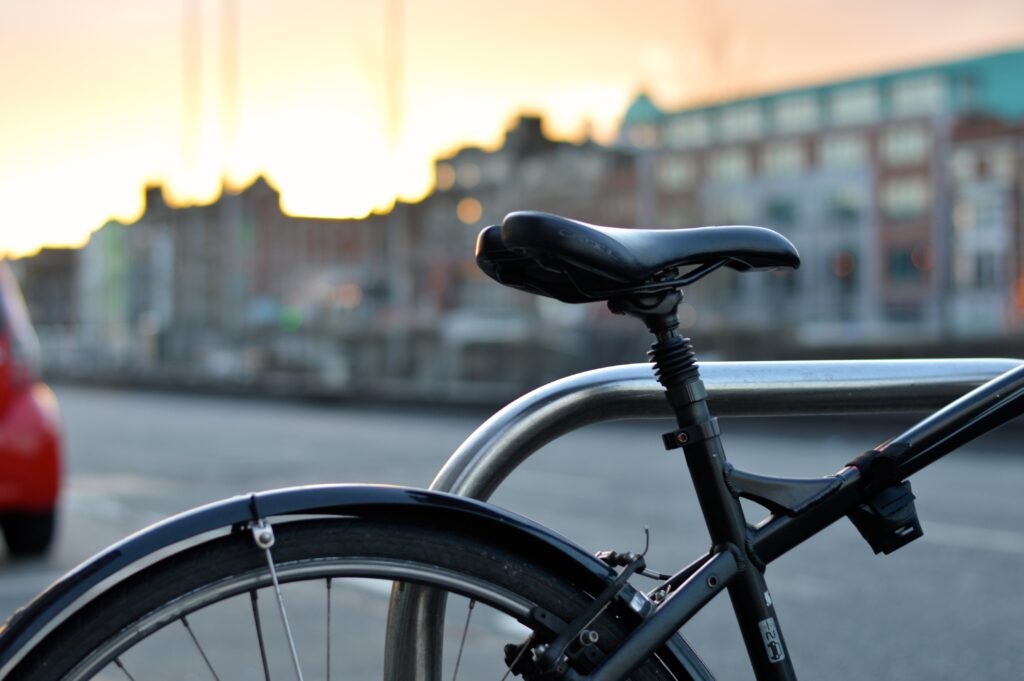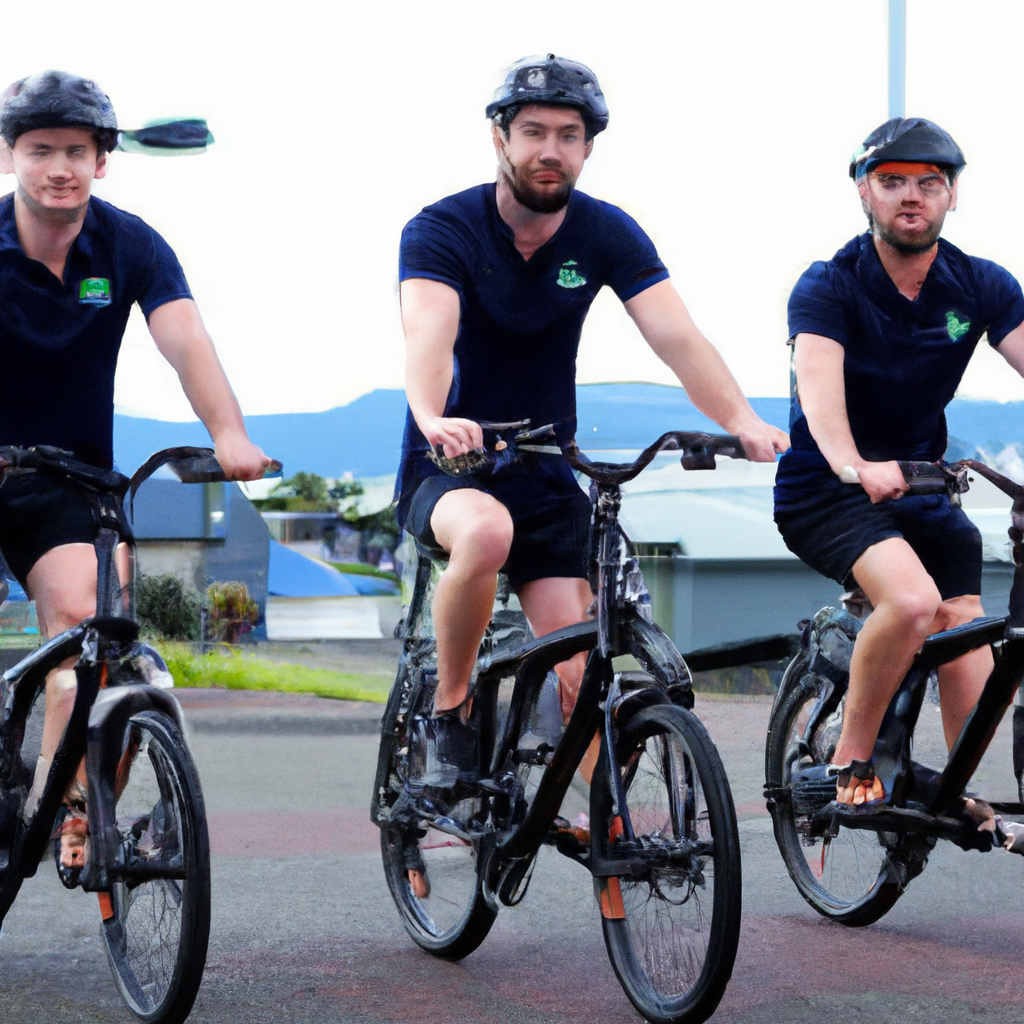Hey there, e-bike enthusiasts! Ready to take your group rides to the next level? In our “Advanced Tips for Group E-Bike Rides: Leadership and Safety” article, we’re diving into the intricacies of leading group e-bike rides and ensuring the utmost safety for everyone involved. This article is tailored specifically for intermediate to advanced riders who already have a strong understanding of e-bike components, safety measures, and basic riding techniques. Whether you’re an experienced commuter, a mountain biker, or even involved in e-bike racing, this guide offers comprehensive information to help you optimize your group rides and take your e-biking adventures to new heights. So get ready to lead the pack and ride confidently with your fellow e-bike enthusiasts!
Choosing a Group Leader
Selecting an experienced rider as the group leader
Choosing the right leader for your group ride is crucial for ensuring a safe and enjoyable experience. It’s important to select someone who is not only experienced in riding but also knowledgeable about group dynamics and safety protocols. Look for a rider who has a good understanding of the route and can make informed decisions in case of unexpected situations. This person should be able to handle different riding levels within the group and effectively communicate with all riders.
Assigning a backup leader
Having a backup leader is a smart and responsible decision. Life is unpredictable, and there may be situations where the primary leader is unable to continue the ride or needs assistance. By assigning a backup leader, you ensure that there is always someone capable of taking charge and making decisions when needed. This backup leader should also be experienced and familiar with the planned route, allowing for a smooth transition of responsibilities if required.
Ensuring the leader is familiar with the planned route
Before embarking on a group ride, it is essential to ensure that the leader is familiar with the planned route. They should have thorough knowledge of the roads, landmarks, potential hazards, and any alternate routes available. Familiarity with the route allows the leader to make informed decisions, keep the group together, and navigate efficiently. It’s also a good idea for the leader to conduct a pre-ride inspection of the route to identify any changes or new challenges that may have arisen since last time.
Pre-Ride Safety Briefing
Discussing safety protocols and group riding etiquette
A pre-ride safety briefing is an integral part of any group ride. It provides an opportunity to remind all participants about the importance of following safety protocols and adhering to proper group riding etiquette. Topics that should be covered include maintaining a safe distance between riders, avoiding sudden maneuvers, using hand signals, and signaling obstacles or hazards to others. Emphasize the need for clear and concise communication within the group, ensuring that everyone understands and acknowledges these guidelines.
Reviewing hand signals and communication methods
Hand signals and effective communication are essential for cohesive group riding. Take the time to review common hand signals used by cyclists to communicate intentions and hazards. Make sure all riders are familiar with these signals and understand their meanings. Additionally, discuss other communication methods such as verbal cues or bike-to-bike communication devices that may be utilized within the group. Encourage riders to speak up if they have any questions or concerns regarding communication during the ride.
Identifying potential hazards along the route
During the pre-ride safety briefing, it is crucial to identify potential hazards along the route. This includes discussing known areas with heavy traffic, potholes, road construction, or any other conditions that may impact the safety of the group. By identifying and addressing these hazards before the ride, riders will be better prepared to navigate them appropriately. Encourage riders to remain vigilant and communicate any new or unexpected hazards they encounter during the ride to ensure the safety of everyone in the group.

Maintaining Group Formation
Importance of riding in a staggered formation
Maintaining a proper group formation is key to safety and efficient riding. Riding in a staggered formation, with each rider slightly offset from the rider in front, allows for increased visibility and reduces the risk of collisions. This formation also provides space for each rider to maneuver and react to obstacles or hazards without endangering others. Remind riders of the importance of maintaining their position within the formation and avoiding abrupt movements that could disrupt the flow of the group.
Tips for maintaining proper spacing between riders
Proper spacing between riders is crucial to ensure safety and prevent accidents, especially during sudden stops or maneuvers. Encourage riders to maintain a safe distance from the rider in front of them, typically about two bike lengths or more. This allows for ample response time and minimizes the risk of a chain reaction collision if the rider in front has to brake suddenly. Remind riders to be aware of their surroundings and adjust their speed or position accordingly to maintain the desired spacing.
Rotating positions within the group to share workload
During long rides or rides with varying terrains, it’s important to rotate positions within the group to share the workload. This allows everyone to have an opportunity to ride in a more sheltered position and conserve energy. Encourage riders to communicate and coordinate position changes, making sure everyone gets a chance to experience the benefits of drafting behind others. Rotating positions also fosters camaraderie within the group and enhances the overall riding experience.
Effective Communication
Establishing a communication plan for the group
Establishing a communication plan is vital for maintaining connectivity within the group and ensuring timely relay of important information. This plan should include designated signals or phrases for indicating stops, turns, hazards, or changes in pace. It’s essential to discuss and practice these signals before the ride to ensure that everyone understands and can effectively communicate with one another. Encourage riders to use the communication plan consistently throughout the ride to maximize safety and avoid confusion.
Using bike-to-bike communication devices
Bike-to-bike communication devices can greatly enhance the overall riding experience, especially for larger groups or rides in challenging environments. These devices allow for clear and instant communication between riders, eliminating the need for hand signals or shouting to convey messages. Riders can easily share information about upcoming obstacles, changes in pace, or any other pertinent details. If members of the group have access to such devices, encourage their use and ensure that everyone knows how to effectively utilize them.
Relaying messages to the entire group
In some cases, it may be necessary to relay messages to the entire group, especially if the group is large or spread over a significant distance. Establish a system for relaying important information, such as changes in route, regrouping points, or any unexpected developments. This can be done through the group leader or designated riders positioned strategically within the group. Clear communication ensures that everyone stays informed and increases overall safety and cohesion throughout the ride.

Safety Gear
Importance of wearing helmets and protective clothing
Wearing proper safety gear is of utmost importance for all riders, regardless of their skill level or the type of ride. Emphasize the significance of wearing a well-fitting helmet to protect against head injuries. Additionally, encourage riders to wear appropriate protective clothing such as padded gloves, knee and elbow pads, and sturdy footwear. In the event of a fall or collision, these protective measures can mitigate injuries and minimize their severity.
Choosing high-visibility apparel for group rides
When riding in a group, visibility is key to safety. Choosing high-visibility apparel, such as brightly colored jerseys or reflective vests, enhances the group’s visibility to motorists and other road users. This increased visibility reduces the risk of accidents and helps ensure that the group remains easily noticeable and predictable to others on the road. Remind riders to prioritize visibility when selecting their riding attire, especially for early morning, late evening, or low-light conditions.
Utilizing rearview mirrors and lights
To enhance situational awareness and further increase safety, riders should consider utilizing rearview mirrors and lights. Rearview mirrors attached to helmets or handlebars provide riders with a clear view of traffic approaching from behind, allowing them to make informed decisions regarding their positioning within the group. Additionally, lights, both front and rear, improve visibility, especially in low-light or dark conditions. These small but effective additions to the bike can significantly contribute to the safety of the entire group.
Managing Group Pace
Matching the pace to the slowest rider
Group rides should cater to the abilities and comfort levels of all participants, especially the slowest rider. The group’s pace should be adjusted accordingly to ensure that no one feels rushed or left behind. The slowest rider sets the pace, and it’s essential for all other riders to respect and accommodate their speed. This approach fosters inclusivity, promotes a positive group dynamic, and ensures that everyone can enjoy the ride at their own pace.
Implementing regrouping points along the route
To maintain cohesion and address variations in riding speeds, it is beneficial to establish regrouping points at intervals along the route. These points serve as checkpoints where the group can come together, rest, and wait for slower riders to catch up. Regrouping points should be predetermined and communicated to all riders during the pre-ride briefing. This strategy allows the group to stay connected and helps prevent riders from feeling isolated or anxious about falling behind.
Adjusting speed based on terrain and difficulty
Terrain and difficulty levels can vary significantly throughout a group ride. It’s crucial for the leader and all riders to adjust their speed accordingly to ensure everyone’s safety and enjoyment. Uphill sections, technical trails, or challenging road conditions may require a slower pace, while flat or downhill sections may allow for increased speed. Constantly assess the terrain ahead and communicate any necessary speed adjustments to the group. This adaptability ensures a smooth and cohesive riding experience for all participants.

Navigating Traffic and Intersections
Strategies for crossing intersections as a group
Navigating intersections as a group requires coordination and adherence to traffic rules. Encourage the riders to follow these strategies to ensure a smooth and safe crossing:
- Stay in a compact formation, minimizing gaps between riders.
- Observe traffic signals and stop signs, signaling turns appropriately.
- Wait for a clear and safe opportunity to cross as a group, avoiding unnecessary risks.
- Ensure that the last rider has crossed before regrouping on the other side.
Dealing with traffic congestion and tight spaces
In situations where traffic congestion or tight spaces pose challenges, it’s crucial to prioritize safety and maintain group cohesion. Remind riders to stay calm, be patient, and communicate effectively with each other and motorists. Encourage the group to ride single file if necessary, allowing vehicles to pass safely. Additionally, emphasize the importance of maintaining a safe distance from parked cars or other potential obstructions to avoid accidents or collisions.
Using hand signals and verbal cues to communicate with motorists
Effective communication with motorists is essential for maintaining safety on the road. Encourage the use of hand signals to indicate intentions, such as signaling turns or changes in pace. Verbal cues, such as calling out hazards or communicating with motorists at intersections, can also help ensure that everyone is on the same page. Encourage riders to be assertive but respectful when communicating with motorists, promoting a harmonious and safe coexistence between cyclists and drivers.
Dealing with Mechanical Issues
Encouraging riders to perform pre-ride bike inspections
Prevention is key when it comes to mechanical issues. Encourage riders to perform pre-ride bike inspections to ensure that their bikes are in optimal working condition. This includes checking tire pressure, brakes, gears, and ensuring that all bolts and components are secure. Regular maintenance and inspections can help identify potential issues before they become major problems, reducing the likelihood of breakdowns during the ride.
Carrying essential tools and spare parts
Even with careful preparation, mechanical issues can still arise during a ride. Encourage riders to carry essential tools and spare parts to address common problems quickly. These may include a multi-tool, spare tubes, tire levers, a pump, and a chain tool. Familiarize riders with the basic skills required to handle common repairs, such as fixing a flat tire or adjusting brakes. Being self-sufficient when it comes to repairs ensures a smoother and more enjoyable ride for everyone.
Designating a designated mechanic within the group
Having a designated mechanic within the group can be immensely helpful in addressing mechanical issues efficiently. This person should be knowledgeable about bike mechanics and capable of handling common repairs. Encourage this individual to offer assistance, guidance, or advice to others in need. By sharing their expertise, the designated mechanic promotes a sense of camaraderie and ensures that everyone can continue riding smoothly, minimizing disruptions caused by mechanical problems.

Emergency Preparedness
Creating a plan for emergency situations
In the event of an emergency, having a well-defined plan is paramount. Create a plan that outlines how the group should respond to different emergency situations, such as accidents, injuries, or severe weather. Assign roles and responsibilities to specific individuals, specifying who should contact emergency services, administer first aid, or provide support to those in need. Regularly review and practice the emergency plan to ensure that all participants are familiar with their roles and can act swiftly and confidently when necessary.
Carrying a first aid kit and knowing basic first aid
A well-stocked first aid kit is an essential item for any group ride. Encourage all riders to carry a basic first aid kit that includes bandages, antiseptic wipes, adhesive tape, and other necessary supplies. It’s also important for riders to have a basic understanding of first aid techniques, such as treating minor wounds, stabilizing fractures, or managing allergic reactions. Consider organizing a first aid training session specifically tailored to the needs of group riders to enhance preparedness and safety.
Communicating with emergency services if needed
In the event of a serious accident or medical emergency, it may be necessary to contact emergency services for assistance. Ensure that all riders know how to communicate effectively with emergency services and provide essential information, such as the location, number of riders involved, and nature of the emergency. Encourage riders to carry identification documents and emergency contact information in case they are unable to communicate directly. Quick and accurate communication with emergency services can make a significant difference in the outcome of an emergency situation.
Continuing Education and Training
Encouraging riders to attend courses or workshops
Continuing education and training are invaluable for riders looking to enhance their skills and knowledge. Encourage riders to attend e-bike-specific courses or workshops that provide advanced instruction on riding techniques, bike maintenance, or road safety. These educational opportunities not only improve individual riding skills but also contribute to a safer and more enjoyable group riding experience by promoting a higher level of competence and awareness.
Learning advanced riding techniques and skills
Advanced riding techniques can significantly enhance the performance and safety of riders. Encourage riders to learn and practice techniques such as proper cornering, controlled braking, and effective climbing and descending methods. These advanced skills improve overall bike handling, allowing riders to navigate challenging terrain with confidence and control. Regular practice, feedback, and additional training can further refine these techniques, elevating the riding experience for individuals and the entire group.
Staying updated on e-bike safety standards and regulations
E-bike technology and regulations are constantly evolving. Encourage riders to stay informed and updated on current e-bike safety standards and regulations. This knowledge ensures that riders are aware of any changes or requirements that may impact their riding experience. Regularly check official websites or consult with local authorities to keep abreast of the latest e-bike safety guidelines, road rules, and any specific regulations that may apply to group riding. By staying informed, riders can ride confidently, knowing they are complying with the most current standards.
In conclusion, advanced group e-bike rides require careful planning, solid leadership, and a focus on safety. By selecting an experienced group leader, conducting pre-ride safety briefings, maintaining proper group formation, utilizing effective communication strategies, wearing the appropriate safety gear, managing the group’s pace, navigating traffic and intersections, handling mechanical issues, being prepared for emergencies, and continuing education and training, riders can enjoy a safe and enjoyable advanced group e-bike riding experience. Remember, safety should always be the top priority, and by following these guidelines, you can ensure a memorable and rewarding ride for everyone involved. Happy riding!




